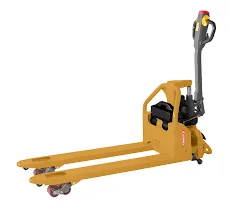


Understanding the Manual Lever Hoist A Versatile Tool for Lifting and Moving
A manual lever hoist, often referred to as a chain hoist or a lever block, is a vital piece of equipment widely used across various industries for lifting and moving heavy loads. This tool combines simplicity and efficiency, making it an essential device in construction sites, warehouses, and even in residential applications.
Mechanism of the Manual Lever Hoist
The manual lever hoist operates through a mechanical advantage system. Essentially, it consists of a chain, a lever handle, a ratchet mechanism, and a hook for securing the load. When the operator pulls down on the lever, the ratchet engages, allowing the chain to lift the load. As the lever is pulled down, it reduces the effort required to lift heavy objects, allowing a single person to move weighty items with relative ease.
This mechanism not only helps in lifting but also in positioning heavy loads accurately. The ability to control the hoist’s movement with precision is crucial in settings where the safety of personnel and equipment is paramount.
Advantages of Using Manual Lever Hoists
One of the most significant advantages of manual lever hoists is their portability. Unlike electric hoists, which require a power source, lever hoists can be used in remote locations without electricity. This feature makes them ideal for outdoor jobs, maintenance tasks, and emergency situations.
Furthermore, manual lever hoists are generally more cost-effective than their powered counterparts. They require less maintenance, have a longer lifespan, and do not incur electricity costs. This economic efficiency can be particularly beneficial for small businesses and contractors who may have budget constraints.

Applications Across Industries
Manual lever hoists are versatile tools used in a multitude of applications. In construction, they are commonly employed to lift steel beams, concrete blocks, and other heavy materials. In warehouses, lever hoists assist in moving loads to and from shelves, especially in confined spaces where forklifts cannot operate effectively.
Additionally, they play a significant role in the automotive industry, where mechanics frequently use them to lift engines or chassis. In entertainment, they are essential for setting up lighting and sound equipment for events, concerts, and theaters.
Safety Considerations
While manual lever hoists are incredibly useful, safety must always be a priority. Operators should receive proper training to understand how to use the hoist safely. Regular inspections and maintenance of the hoist are essential to ensure it functions correctly and does not pose a danger during use. Always ensure that the load capacity is not exceeded, and use appropriate protection gear when lifting heavy items.
Conclusion
The manual lever hoist remains an indispensable tool within various industries due to its efficiency, portability, and affordability. Its simple yet effective design allows even those with minimal training to operate it safely and effectively. As industries continue to evolve, the manual lever hoist will undoubtedly remain a crucial component of lifting and transporting loads across numerous applications, proving the adage that sometimes the simplest tools are the most effective. Whether you're a seasoned professional or someone new to using lifting equipment, understanding and utilizing a manual lever hoist can greatly enhance your operational capabilities while ensuring safety and efficiency.



